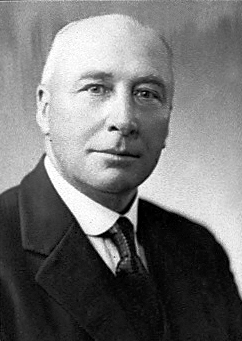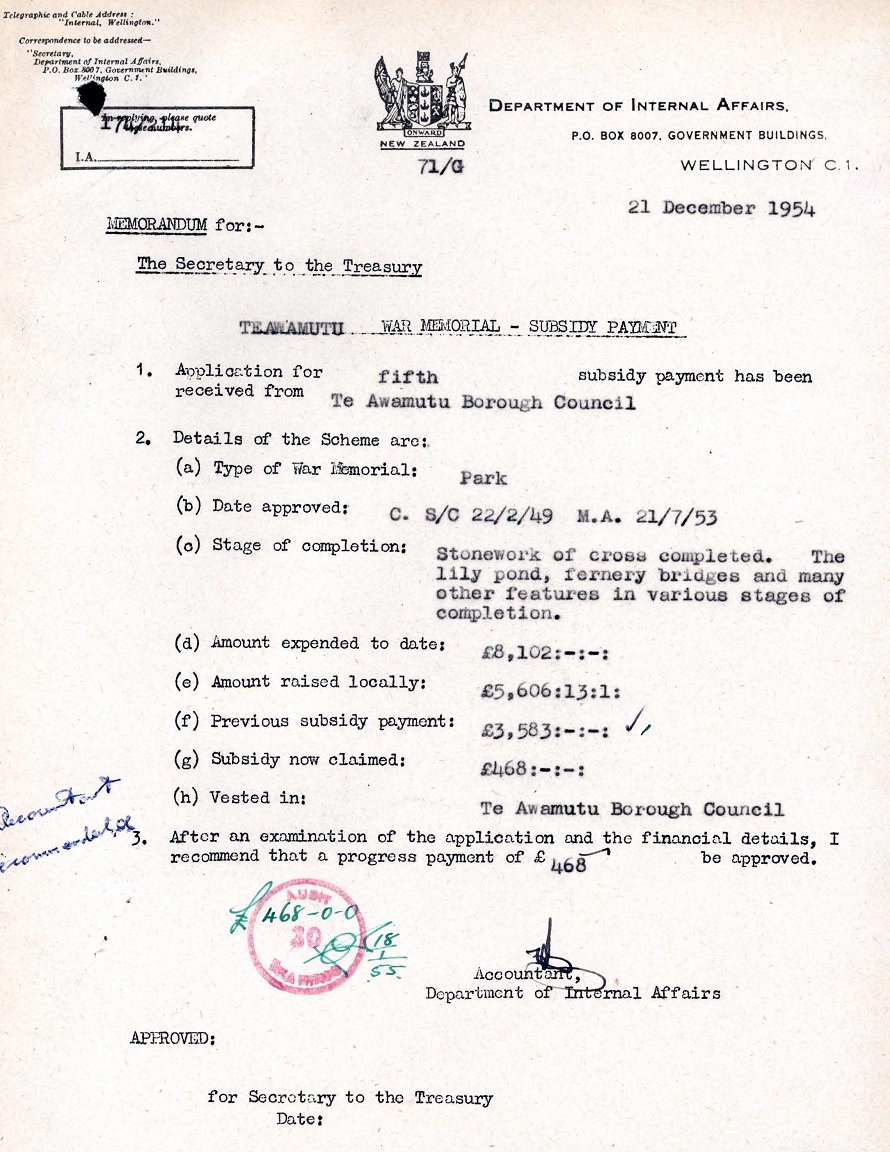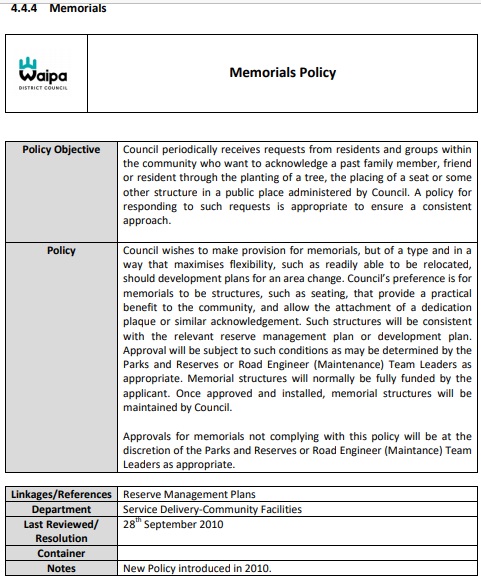1935 -‘49

“give up any idea...of bricks and mortar”
See Min' of Int' Aff' W.E Parry's Conditions for Subsidy
A Park, Planned, Funded, Built, Vested and Dedicated as a Government Approved WW2 District Memorial.
See Waipa Council's Policy for Memorials
The Waipa District War Memorial Park was funded from community donations with a pound for pound government subsidy under the Memorial Community Center Scheme (with conditions)
The Memorial Park was built majorly with voluntary efforts that were also subsidised. To qualify for subsidy, guidlines were given.
See 19.2.47 W.E Parry Minister of Int' Affairs visited Te Awamutu:
He had made a “pretty big battle for Community Centres” and saw in them better war memorials than statues etc. “There could be no finer war memorial than a community centre raised in the name of the fallen where the youth of the nation could be uplifted physically, morally, and spiritually”
Mr Parry confirmed that trees could be embodied and even suggested: “that they give up any idea of building a memorial of bricks and mortar, but have a living thing...that would galvanise the youth.. physically and spiritually” and that memorials needed to “fit in with the needs of the nation”
See 21.2.47 Warburton Editorial. “It will certainly register public desire that priority of attention be given to the provision of a war, or rather a Peace Memorial, and in that respect Mr Parry has offered very helpful advice...All that need be done is to improve the natural endowment of a stream to preserve the ideal of memorial...”
Gibbs’ Memorial proposal of Sep’ 47 via Te Awamutu Chamber of Commerce, epitimised the memorial guideline given by Minister Parry and met the needs of the community. It involved a larger area beyond the ‘park proper’ from Arawata st to Racecourse rd, including ‘taking in’ the site of the old Borough Nursary, recently given permission to become the Basketball Courts.
18.10.48. In order to have the application fit within the scope of their subsidy policy, Int’ Affairs requested information on what community facilities Te Awamutu had, also noting that a community centre (Basketball Courts) was planned next to the memorial site and proposed adopting this as the Community War Memorial.


